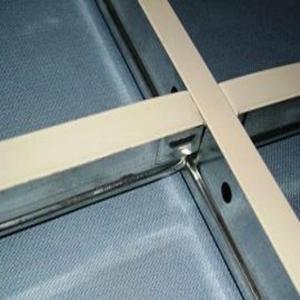Fiberglass ceiling insulation is a popular choice for homeowners looking to improve the energy efficiency, comfort, and noise reduction in their homes. Made from tiny glass fibers, this material is known for its durability, affordability, and ease of installation. In this article, well explore the benefits of using fiberglass for ceiling insulation, how it works, and some tips for installation.
Why Choose Fiberglass Ceiling Insulation?
Fiberglass insulation is a versatile material that can be used in various applications, including ceiling insulation. Here are some reasons why homeowners choose this material:
1. Energy Efficiency: Fiberglass insulation helps to reduce heat transfer between the interior and exterior of your home, keeping your space warm in the winter and cool in the summer. This can lead to significant savings on energy bills.
2. Noise Reduction: The fibrous nature of fiberglass insulation makes it an excellent sound absorber, reducing noise from outside and between rooms.
3. Durability: Fiberglass is resistant to mold, mildew, and pests, ensuring long-lasting protection for your home.
4. Affordability: Compared to other insulation materials, fiberglass is relatively inexpensive, making it an attractive option for those on a budget.
5. Easy Installation: Fiberglass insulation can be easily cut and fitted to the contours of your ceiling, making it a DIY-friendly option.
How Does Fiberglass Ceiling Insulation Work?
Fiberglass insulation works by trapping air pockets within its fibers, creating a barrier that slows down the transfer of heat. This is known as thermal resistance, measured in R-values. The higher the R-value, the better the insulation material is at resisting heat flow.
The Benefits of Proper Insulation
Proper insulation can have a significant impact on your homes comfort and energy efficiency. Here are some benefits you can expect from installing fiberglass ceiling insulation:
– Reduced Energy Bills: By reducing heat transfer, your home will require less energy to maintain a comfortable temperature, leading to lower energy bills.
– Improved Indoor Air Quality: Fiberglass insulation can help prevent drafts and air leaks, which can introduce pollutants and allergens into your home.
– Enhanced Comfort: A well-insulated home maintains a more consistent temperature, reducing cold spots and drafts.
– Noise Reduction: As mentioned earlier, fiberglass insulation can absorb sound, creating a quieter living environment.
Installation Tips for Fiberglass Ceiling Insulation
Installing fiberglass ceiling insulation can be a straightforward process if you follow these tips:
1. Measure Your Space: Before purchasing insulation, measure the area of your ceiling to ensure you have enough material for the job.
2. Choose the Right R-Value: Select an insulation with an appropriate R-value for your climate and the specific requirements of your home.
3. Wear Protective Gear: Fiberglass fibers can be irritating to the skin and respiratory system, so wear gloves, a mask, and safety goggles when handling the material.
4. Ensure Proper Fit: Cut the insulation to fit snugly between the ceiling joists, leaving no gaps where air or heat can escape.
5. Seal Air Leaks: Before installing the insulation, check for and seal any air leaks in the ceiling to maximize its effectiveness.
6. Maintain Proper Ventilation: Ensure that your attic or roof space is well-ventilated to prevent moisture buildup, which can lead to mold and mildew.
The DIY Approach vs. Hiring a Professional
Deciding whether to install fiberglass ceiling insulation yourself or hire a professional depends on several factors, including your comfort level with DIY projects, the complexity of your ceiling, and your budget. If youre confident in your abilities and have a relatively simple ceiling, a DIY approach can save you money. However, if youre unsure or dealing with a more complex installation, hiring a professional can provide peace of mind and ensure the job is done correctly.
Conclusion
Fiberglass ceiling insulation is an effective, affordable, and durable solution for improving the energy efficiency and comfort of your home. By understanding its benefits, how it works, and following proper installation guidelines, you can create a warmer and quieter living space. Whether you choose to go the DIY route or hire a professional, investing in fiberglass insulation is a smart decision for long-term home comfort and savings.

